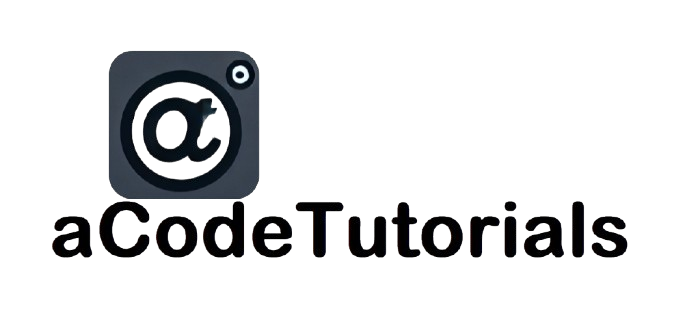jQuery Radio Button Selector
The Radio Button Selector in jQuery is used to target <input> elements of type radio. This selector is helpful for selecting, manipulating, and handling radio button inputs specifically. Radio buttons are used in forms to allow users to select one option from a set of mutually exclusive options.
Syntax
$("input:radio")
How It Works
- The Radio Button Selector targets
<input>elements withtype='radio'. - It allows you to apply styles, manage states, and handle events for radio buttons, making it easier to interact with these form elements.
Example Usage
1. Styling All Radio Buttons
You can use the Radio Button Selector to apply styles to all radio buttons in a form.
<!DOCTYPE html>
<html lang="en">
<head>
<meta charset="UTF-8">
<title>Radio Button Selector Example</title>
<script src="https://code.jquery.com/jquery-3.6.0.min.js"></script>
<script>
$(document).ready(function() {
$("input:radio").css("border", "2px solid green");
});
</script>
</head>
<body>
<form>
<input type="radio" name="choice" value="option1"> Option 1
<input type="radio" name="choice" value="option2"> Option 2
<input type="radio" name="choice" value="option3"> Option 3
</form>
</body>
</html>
Explanation:
$("input:radio")selects all radio button inputs and applies a green border to them.
2. Selecting a Specific Radio Button
You can select a specific radio button based on its value and set it as checked.
<!DOCTYPE html>
<html lang="en">
<head>
<meta charset="UTF-8">
<title>Radio Button Selector Example</title>
<script src="https://code.jquery.com/jquery-3.6.0.min.js"></script>
<script>
$(document).ready(function() {
$("input:radio[value='option2']").prop("checked", true);
});
</script>
</head>
<body>
<form>
<input type="radio" name="choice" value="option1"> Option 1
<input type="radio" name="choice" value="option2"> Option 2
<input type="radio" name="choice" value="option3"> Option 3
</form>
</body>
</html>
Explanation:
$("input:radio[value='option2']")selects the radio button with the valueoption2and sets it to be checked.
3. Handling Radio Button Changes
You can handle the change event for radio buttons to perform actions when a user selects an option.
<!DOCTYPE html>
<html lang="en">
<head>
<meta charset="UTF-8">
<title>Radio Button Selector Example</title>
<script src="https://code.jquery.com/jquery-3.6.0.min.js"></script>
<script>
$(document).ready(function() {
$("input:radio").on("change", function() {
alert("Selected value: " + $(this).val());
});
});
</script>
</head>
<body>
<form>
<input type="radio" name="choice" value="option1"> Option 1
<input type="radio" name="choice" value="option2"> Option 2
<input type="radio" name="choice" value="option3"> Option 3
</form>
</body>
</html>
Explanation:
- The
$("input:radio")selector attaches achangeevent handler to all radio buttons. When a radio button is selected, it triggers an alert displaying the value of the selected radio button.
4. Grouping Radio Buttons
Radio buttons with the same name attribute are grouped together, allowing only one to be selected at a time. You can use this grouping to manage the state of related radio buttons.
<!DOCTYPE html>
<html lang="en">
<head>
<meta charset="UTF-8">
<title>Radio Button Selector Example</title>
<script src="https://code.jquery.com/jquery-3.6.0.min.js"></script>
<script>
$(document).ready(function() {
$("#showSelected").on("click", function() {
var selected = $("input:radio[name='choice']:checked").val();
alert("Selected option: " + selected);
});
});
</script>
</head>
<body>
<form>
<input type="radio" name="choice" value="option1"> Option 1
<input type="radio" name="choice" value="option2"> Option 2
<input type="radio" name="choice" value="option3"> Option 3
<button type="button" id="showSelected">Show Selected</button>
</form>
</body>
</html>
Explanation:
$("input:radio[name='choice']:checked")selects the checked radio button within thechoicegroup. Clicking the button with IDshowSelecteddisplays the value of the selected radio button.
Use Cases
- Form Management: Efficiently manage and manipulate radio buttons within forms, such as pre-selecting options or handling form submission.
- User Interaction: Respond to user interactions with radio buttons, such as displaying alerts or updating other parts of the UI based on selections.
- Dynamic Forms: Handle dynamic forms where radio buttons may be added or removed, and you need to manage their states or interactions.
Performance Considerations
- The Radio Button Selector is efficient for targeting and managing radio buttons. However, in large forms or documents with many radio buttons, ensure that selectors are specific to avoid performance issues and unintended selections.
